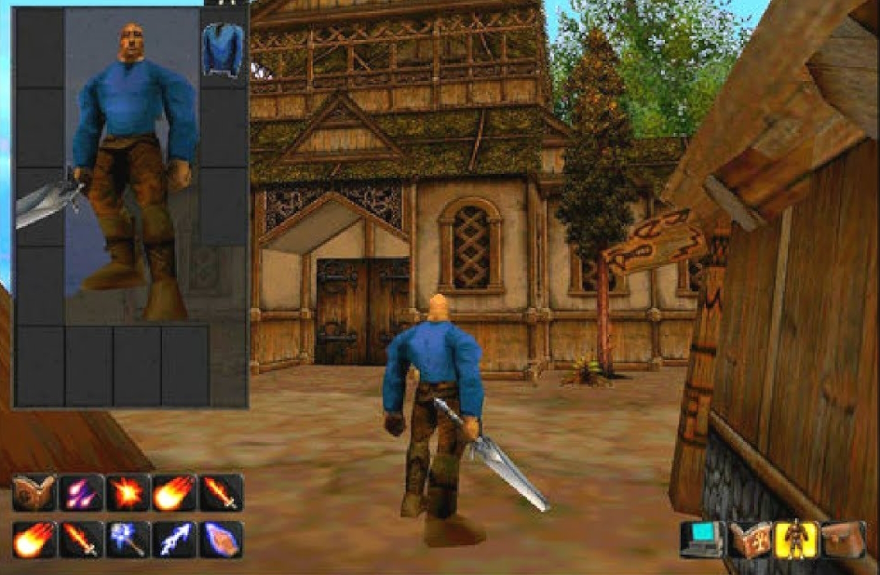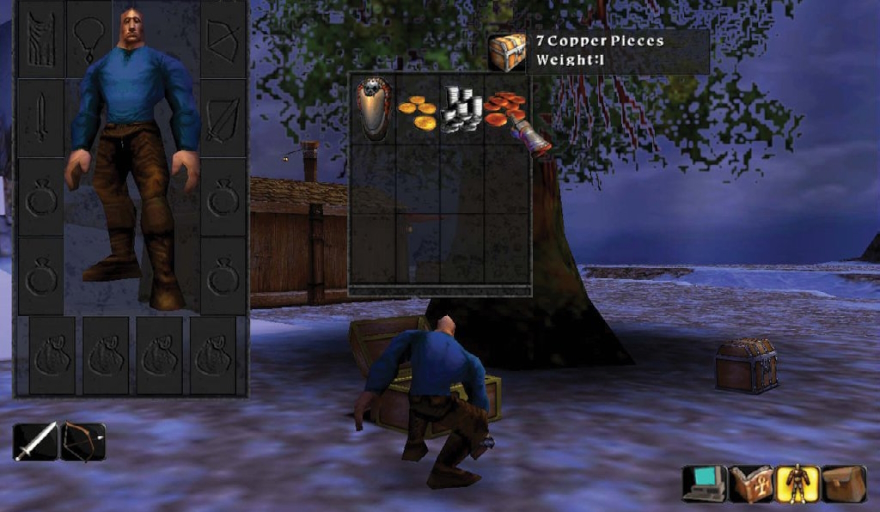
MMORPGs don’t pop out of nowhere, ex nihilo, to suddenly be enjoyed by players across the globe. Good ones take several years, dozens of developers, and millions of dollars to make. So while World of Warcraft officially debuted to the public in November 2004, this was at the end of over a half-decade of development that stretched back to the 1990s.
Today I want to travel back to the very, very early days of World of Warcraft: its genesis, early prototypes, and first looks. How did this title come to be, and what changed during the first five years of its development to make it into the MMO that we know today?
First of all, a quick recap leading up to the origin of WoW. Blizzard Entertainment originally founded in 1991 as Silicon & Synapse. After creating some SNES titles, the studio released its first smash hit, Warcraft: Orcs & Humans, in 1994. That real-time strategy game was then followed by by the sequel in 1997 and the third game in 2002.
As for World of Warcraft itself, work began on the behind closed doors sometime around 1999 (some reports put this as early as December 1998) to take the fan-favorite fantasy IP into this blossoming genre of MMORPGs. At the time, titles like Ultima Online and EverQuest were booming, and Blizzard felt that MMOs were prime real estate for its Warcraft franchise.
Development on WoW ran parallel with work on Warcraft III with many of the same team members. And in fact, early versions of WoW actually utilized the Warcraft III game engine with the same hovering camera perspective. That engine was subsequently modified to become what we know today as the WoW Engine.
Here’s the earliest known screenshot of WoW, using the Warcraft III engine:
Some of the earliest zones created were for the humans, including the regions of Elwynn Forest and Westfall along with the Deadmines dungeon circa 2001.
During this period of development, the shape and scope of the world was fleshed out to be a lot bigger and more expansive than was seen in the RTS titles and associated maps. There were early plans to include some places such as Northrend, Outland, and the Undermine in the base game, but these were tabled until later.
 As the dev team were big fans of MMOs at the time, it makes sense that many of the members drew inspiration from titles such as EverQuest and other DikuMUDs for WoW’s core structure. One early decision that set the course for WoW’s enormous success was to make the game far more casual-friendly than many games in the genre, with more compassionate corpse runs, less aggressive mobs, and no XP loss upon death.
As the dev team were big fans of MMOs at the time, it makes sense that many of the members drew inspiration from titles such as EverQuest and other DikuMUDs for WoW’s core structure. One early decision that set the course for WoW’s enormous success was to make the game far more casual-friendly than many games in the genre, with more compassionate corpse runs, less aggressive mobs, and no XP loss upon death.
But of course, the real kernel that lit the public imagination on fire was the World of Warcraft quest system with the iconic yellow exclamation marks. Initially, these were designed to help new players onramp into the more grind-heavy and raid-focused endgame, with only around 100 quests made. But when these quests proved to be so popular and testers were upset to run out of them, the studio agreed to expand the team to put in hundreds more into the launch game.
Another important element to World of Warcraft was crafting the graphic look that would define the MMO’s style. Concept Artist Jimmy Lo helped to spearhead a movement away from a realistic visual design to focus on bright colors and exaggerated models.
With a lot of experimentation and changes, there were plenty of early elements and design decisions that were modified or dropped along the way. Some of these include Rogues using bucklers, Dwarf Mages, the Emerald Dream, the famous Tauren Plainsrunning skill, a two-tiered Ironforge, Gnomeregan as a normal city, cross-faction communication between the Undead and Alliance, no city guards to ward off roving bands of PvPers, and — yes — an early version of player housing.
The first time that the public got to see World of Warcraft was the official reveal at the European Computer Trade Show trade show in September 2001. Ironically, reactions to the announcement were mixed, with some vocal elements blasting the decision to veer away from the series’ RTS roots and charge a subscription.
Computer Gaming World got the first magazine scoop on WoW in its November 2001 issue with a 16-page spread.
For the next two years, the studio would drip-feed info to its playerbase, including a press preview that happened in February 2002 with a primitive UI.
While the odd gaming magazine was allowed a glimpse into this game, the first time that any outside players got to experience WoW was 2003 with the friends and family alpha. What’s crazy is that in December of that year, someone leaked the code to the community, prompting a strong condemnation from Blizzard for anyone who might think of using it.
By 2004, beta testing was in full swing, and once the launch happened later that year, the gaming public’s awareness of this title cemented it as legend.
As one developer said in that 2001 magazine interview, “There is so much to this universe, so much we want to explore. All we could think as we started this project was, dude, how cool would it be to be in that world, to be those heroes and adventure in the places we fought all those massive battles in?”
 Believe it or not, MMOs did exist prior to World of Warcraft! Every two weeks, The Game Archaeologist looks back at classic online games and their history to learn a thing or two about where the industry came from… and where it might be heading.
Believe it or not, MMOs did exist prior to World of Warcraft! Every two weeks, The Game Archaeologist looks back at classic online games and their history to learn a thing or two about where the industry came from… and where it might be heading.

















